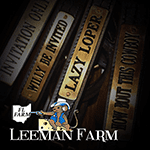Regardless of age, breed, or discipline, transitions are a crucial part of every ride. For novice riders, however, this can be one of the more complicated things to master.
Many factors go into a good transition, and knowing how to put it all together is critical. Matt and Beth Gouthro of BMG Show Horses in Staunton, Virginia, have been training horses for over twenty years.
Over the years, they’ve coached many riders at many different skill levels and have developed several tips for ensuring those transitions happen effortlessly, particularly for novice riders.
Fundamentals First
First, what makes these transitions such a tricky spot for novices to master? A lot of it comes down to the rider’s lack of time and lack of feel on a horse. Beth says, “Transitions are tough because you have to have the ability to feel where the horse has resistance and respond with the ‘right’ pressure at the ‘right’ time, whether it be in the horse’s mouth or his sides.”
That isn’t always the easiest thing to convey to a novice rider. “It’s a hard thing to coach someone through because the horse’s stickiness is ever-changing/willingness through his body is constantly changing,” Beth continues. “The rider’s ability to feel and recognize, then adjust their own body, leg or hand pressure, determines both the smoothness of a transition and the overall responsiveness of the horse.” While getting that across to a rider may be tricky, what it boils down to is simple, “This takes time and a lot of practice.”
 Along with lots of practice, having the right equine partner plays a role too. Matt (pictured right) says, “This is not something that we do differently when teaching a novice, but something we look for in choosing a horse for a novice rider. Whether it be a ranch horse, a western pleasure horse, or an under-saddle horse, we look for a horse that will tolerate or respect the type of rider we are looking for.”
Along with lots of practice, having the right equine partner plays a role too. Matt (pictured right) says, “This is not something that we do differently when teaching a novice, but something we look for in choosing a horse for a novice rider. Whether it be a ranch horse, a western pleasure horse, or an under-saddle horse, we look for a horse that will tolerate or respect the type of rider we are looking for.”
All riders are different, but it is a pretty safe bet that novice riders don’t need the hottest horse on the market, and that would only make teaching them transitions that much more difficult.
Matt reiterates this saying, “Generally we will choose a lazier, duller horse for a novice, then teach that novice how to be aggressive and get the most out of the horse, while we choose a lighter, edgier horse for a more advanced rider as long as that horse can still soften and come back.”
Forward, Forward, Forward
 When trying to get a smooth transition, regardless of experience level, there are a few essential things to keep in mind. Matt and Beth agree on this saying, “The main thing we strive for is a smooth transition. The horse should be willing, and the rider should be able to communicate the desired transitions with minimal hand and leg cues.”
When trying to get a smooth transition, regardless of experience level, there are a few essential things to keep in mind. Matt and Beth agree on this saying, “The main thing we strive for is a smooth transition. The horse should be willing, and the rider should be able to communicate the desired transitions with minimal hand and leg cues.”
Another fundamental they both agree on is when starting, forward motion is crucial. Beth says, “The other thing that I find myself saying a ton while coaching, whether I’m working with a novice or an advanced rider, is “go forward,” “forward is your friend.”
Matt reiterated the same sentiment, saying, “In all transitions except the stop, maintain some forward motion.” That forward motion sets the foundation for the other necessary parts to come together. It’s important to remember that “Whenever you get stuck, release and take a step forward, then ask again,” says Beth.
Mastering the Maneuver
Now that the basics are covered, what makes good transitions stand out, and how do you teach that to a novice? Beth says, “I always tell beginners to ask softly and increase the pressure until you get the desired response. You always want to use only the pressure necessary to get it. This keeps your horse happy and light. But don’t be afraid to ask for more, and don’t take pressure away until you get a reaction.”
 In particular, for novices moving from discipline to discipline, some differences may impact their transitions. According to Beth (pictured right with her family), riding in an English saddle can make getting those transitions to be smooth, even trickier.
In particular, for novices moving from discipline to discipline, some differences may impact their transitions. According to Beth (pictured right with her family), riding in an English saddle can make getting those transitions to be smooth, even trickier.
“Many times, novice riders are not as stable in their lower leg, especially when riding in the English saddle,” Beth explains. “It’s easier for them to get in the way with their legs, either by having a floppy leg, or hugging and using their calves to push themselves out of the saddle at the post or grabbing the horse suddenly with a leg when they lose balance, or the horse makes a sudden move.”
Of course, that’s not the ideal result, and it may not end well. She continues, “This can end in disaster. Instead, I like to keep them a bit duller for the novices and focus on the seat, softening body position, and calf/hand combinations rather than spur down transitions for my novice hunter under saddle riders.
Mastering any transition on a horse can be tricky, and when the rider is a novice, it is a lot harder to get those smooth-looking transitions. However, with lots of time, practice, the right horse, and a slight forward motion, even the most novice of riders can develop smooth transitions.









